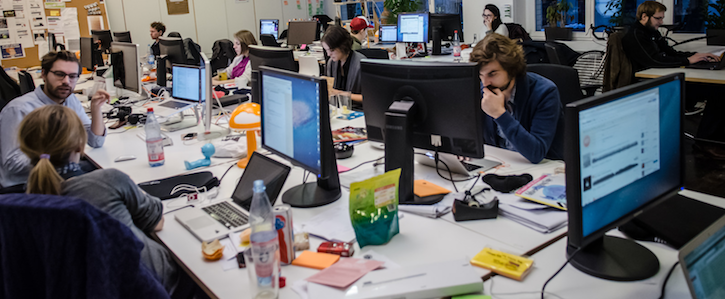Spotting the Signs of a Strong AI Start-Up
An up-and-comer in healthcare AI describes how he gauges his peers’ potential.

Image has been cropped and resized. Courtesy of Heisenberg Media, Flickr.
Dalton Shaull might be young, but he knows more about artificial intelligence (AI) and its applications in healthcare than many algorithm evangelists. His start-up, HealthTech Solutions, uses such technologies to hammer inefficiencies in the organ transplant space and power a chat bot, after all. But that doesn’t mean he’s a blind cheerleader for all things AI.
In fact, Shaull views budding AI start-ups through a particular lens, scanning for attributes that signal whether the project is cause for applause or reason for skepticism. Healthcare Analytics News™ caught up with Shaull today at HIMSS 2018 in Las Vegas, Nevada. The Forbes 30 Under 30 healthcare entrepreneur shared what he looks for in potential AI partners and, more broadly, which endeavors might make a noticeable difference in healthcare.
First, he said, the technology must “solve a big problem in a simple way.” It’s no secret that healthcare is a sprawling space, with many arms and many challenges. The large quantity of issues sometimes tempts AI start-ups, led by idealists and innovators, to try to tackle the entire spectrum. That sort of catchall effort is unlikely to work, Shaull said.
AI up-and-comers that stay focused on their root problem may expand the applications of their technologies as they refine them, he said. They can also strike partnerships with high-tech peers that target a different corner of healthcare. What an AI team can’t do, at least not yet, is accomplish goals that are glaringly large.
It’s critical for these businesses to strive to create value across health system supply chains. “Cracking this problem is not a one-company thing, and it never will be,” Shaull said.
But many AI start-ups aspire to overhaul healthcare at large. Shaull didn’t frown on the idea of dreaming big, but he said far-reaching ambitions can confuse potential partners and other stakeholders, obscuring an organization’s position in the market. In Shaull’s view, AI must be rolled out in a “segmented, more controllable” way.
Equally important, AI companies need to understand how their product affects the economics and clinical workflows of healthcare, he noted.
For one, the technology is no good if no one uses it. The architects must analyze how clinicians and patients prefer to use a given technology and then fit it into the end user’s life, Shaull said.
Further, developers must consider the real-world effects of their AI—both for the good of the healthcare system and their standing with clients, he said.
Finally, it’s pivotal to put the right marketing and user interface behind these technologies, Shaull added.
So what makes him skeptical about new healthcare AI players? One big red mark is ignorance of the healthcare system and how it functions, especially from a systems perspective. If start-up captains aren’t following the money and learning how processes get implemented, they won’t know how their work fits into the big picture.